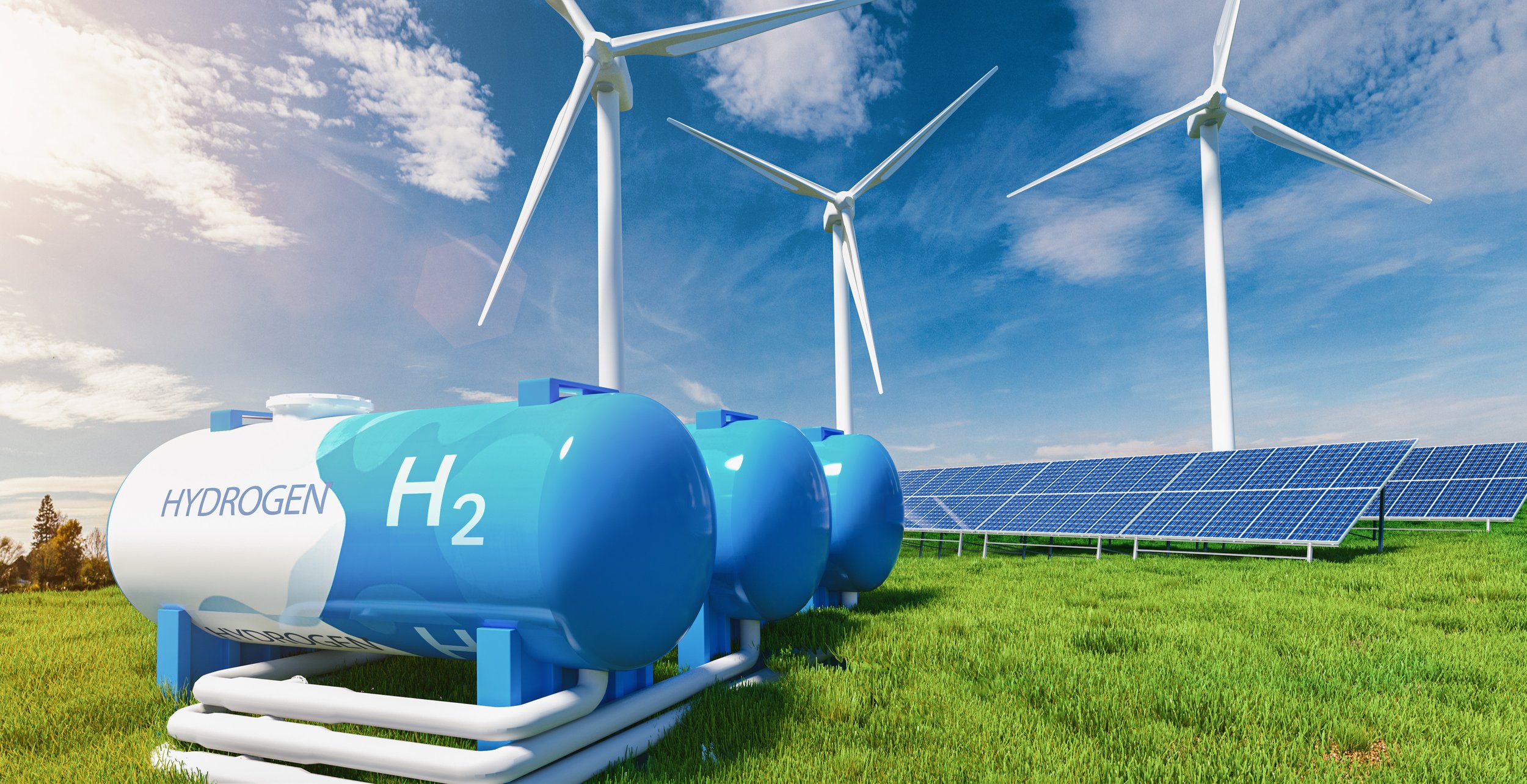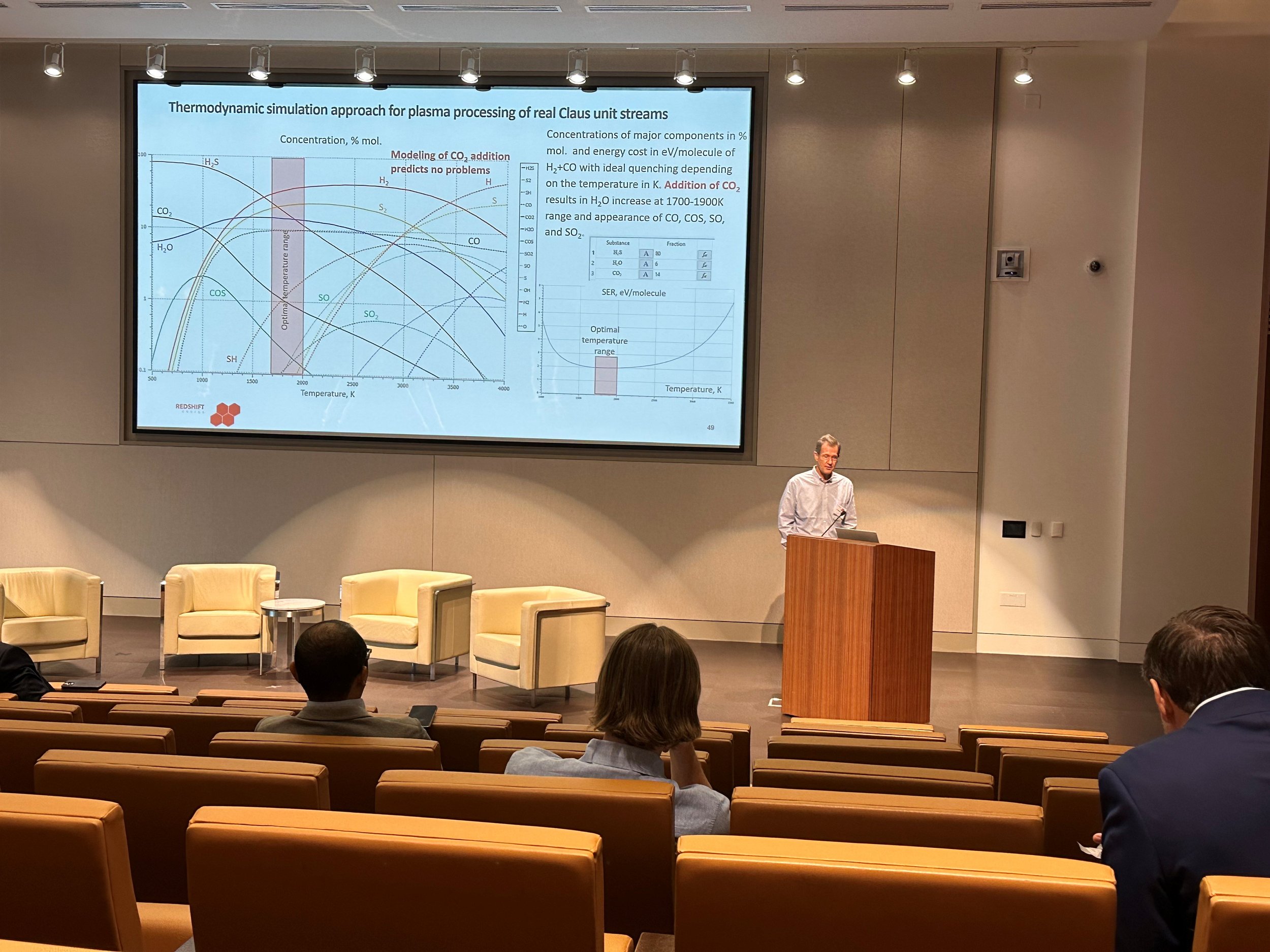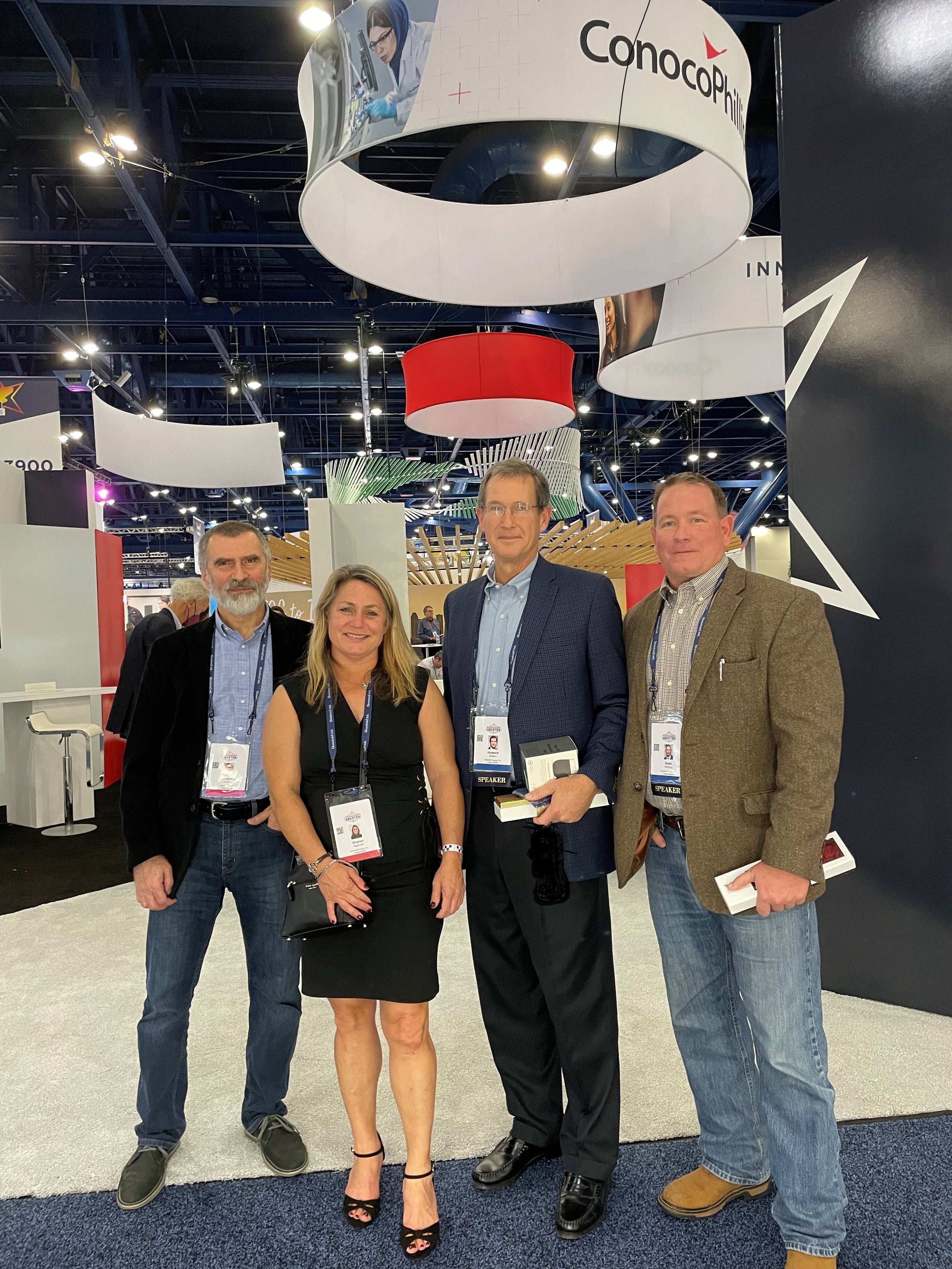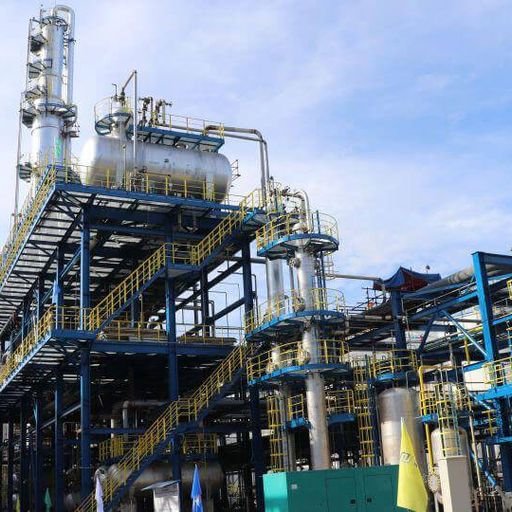
ENSURING AN AFFORDABLE ENERGY FUTURE
Using Plasma Energy To Turn Waste Into Value
News
-

National Science Foundation
RedShift Energy receives award from National Science Foundation for Carbon-Free Production of Hydrogen from Hydrogen Sulfide.
-

U.S. Department of Energy
RedShift Energy is now a U.S. Department of Energy Awardee.
-

Halliburton Labs
Halliburton Labs selects RedShift Energy for industrial scaling program.
About
RedShift Energy, Inc. is developing an innovative plasma process that dissociates hydrogen sulfide (H2S) into hydrogen and sulfur, with no carbon emissions. Conventional Claus-based Sulfur Recovery Systems do not recover hydrogen.
Thermodynamically, H2S is the least expensive source of carbon-free hydrogen when paired with renewable electricity. This novel process employs patented modular and scalable systems that retain their economic advantage from upstream to downstream. Deploying this disruptive technology will economically process H2S, while reducing emissions of carbon dioxide from Steam Methane Reforming hydrogen production.
Our technologies will help companies meet ESG goals for Scope 1 and Scope 2 greenhouse gas emissions.
Our Company
RedShift Energy, Inc., a privately held corporation, is developing an innovative plasma chemistry process that safely and effectively converts an unwanted byproduct of the oil industry, hydrogen sulfide (H2S) into two commercial products – hydrogen and sulfur, without carbon emissions.
PLASMA CHEMISTRY
Plasma is one of the four major states of matter. There is not a sharp boundary between gas and plasma: gas that contains positively and negatively charged particles, ions and electrons, and therefore is electrically conductive, is plasma. When we control properties of gas with electro-magnetic fields, we work with plasma. Using electricity, it is possible to create plasma with very different properties: for example, hot plasma of electric arc used for welding and cold plasma in fluorescent lamps. Plasma can be used for control of chemical processes.
ENVIRONMENTAL IMPACT
Replacing a Claus-based Sulfur Recovery System (SRS) with RedShift technology, when paired with a renewable source of electricity, will yield zero-carbon hydrogen.
When deployed upstream, the technology helps reduce greenhouse gas emissions by enabling the safe recovery of associated gases.

Clean Hydrogen from H2S
Today, refineries consume 35% of the hydrogen produced worldwide, primarily to remove sulfur from oil products. The oil desulfurization process converts sulfur-containing substances and hydrogen to hydrogen sulfide. Then, hydrogen sulfide is partially oxidized in the Claus process-based sulfur recovery units to sulfur and water vapor. RedShift technology enables the recovery of carbon-free hydrogen from H2S, that is thermodynamically the least expensive source of hydrogen.
Hydrogen Opportunity
RedShift technology is a proprietary method that builds on forty years of research and development. The systems are modular and scalable. It is economically viable from wellhead to refinery scale. A clear opportunity exists for the introduction of this disruptive technology that can economically process H2S. Recovery of carbon-free hydrogen from H2S will result in significant reduction of Scope 1 and Scope 2 greenhouse gas emissions during hydrogen production by steam reforming of hydrocarbons.
Catalyst Free Dry Reforming to Produce Soot-Free Syngas
Using CO2 and methane feedstocks, our proprietary arc plasmatron and gas management system is intended to produce syngas (CO +H2) efficiently and economically. Syngas can be produced in ratios between 1:1 and 3:1 to meet customer product requirements, such as SAF or lubricants. These modular systems will be able to scale in concert with customer strategic goals.
Innovation
Patented Plasmatron
RedShift technology uses a proprietary arc plasmatron to create a high-temperature zone that dissociates hydrogen sulfide and enables hydrogen recovery at atomospheric pressure. The technology is very compact in comparison to the Claus system in a sulfur recovery unit.
Stable Operation
Stable long-term energy efficient operation is enabled by precisely arranged gaseous dynamics and plasmatron materials.
We identified materials that enable electric arc electrodes to operate for extended periods in H2S atmosphere.
Special Flow Dynamics
We are the experts in the formation of electric discharges in vortex flows at atmospheric pressure. Our process enables a shift of the chemical equilibrium of hydrogen sulfide disassociation and an increase in process efficiency.
Downstream Impact
RedShift technology allows recovery and recycling of hydrogen at a cost less than US $1/kg.
This process produces carbon-free hydrogen.
The process has a modular design for maximum operational efficiency and a small footprint.
Upstream Impact
High sulfur content prevents development of many reserves.
Our technology allows for handling of hydrogen sulfide on-site and enables development of high sulfur content reserves.
EVENTS
EVENTS
June 2022
Venue
Houston, TX
Halliburton Labs Selected RedShift Energyfor Industrial Scaling Accelerator
RedShift Energy, Inc. is one of three companies selected by Halliburton Labs to participate in their clean energy accelerator over the next year, starting in June 2022. The RSE team has access to Halliburton's extensive global facilities and resources including engineering services, supply chain, and consulting to further scale and optimize RedShift's novel hydrogen production technology.
23rd World Petroleum Congress
RedShift Energy, Inc. was selected as one of the finalists for the Conoco Phillips Innovation Zone at the 23rd World Petroleum Congress. Innovation was the theme of the Congress, with companies representing over 70 countries in attendance. The Congress is held in cities all over the world, once every three years. It is the first time the Congress was hosted in the United States in over thirty years. Dr. Alexander Gutsol and Howard Nelson introduced the technology to the attendees at the Congress on Monday, December 6, 2021.
March 7, 2023
Venue
Rice Alliance Energy Venture Day
Rice Alliance Energy Venture Day
RedShift Energy, Inc. participated in the Rice Alliance Energy Venture Day at the Rice Business - Jones Graduate School of Business. Howard Nelson, Trey Anthony and Sherry Naismith met with 8 investor groups over a two-hour time period. The meetings provided valuable time to introduce our zero-carbon hydrogen production process and plans to scale up the technology. Howard Nelson presented the novel hydrogen process and plans to scale up to the larger community of corporate venture and investor groups in the pitch competition that followed.
March 8, 2023
Venue
Houston, TX
CERAWeek 2023
RedShift Energy, Inc. participated in the Innovation Agora at CERAWeek 2023. The Houston Energy Transition Initiative (HETI) selected RedShift Energy to present the novel hydrogen production technology in the pitch competition. RedShift Energy was selected as Fan Favorite for their division (pre-seed/Series A) and as Chevron Choice for Catalyst Opportunity, which provides the valuable opportunity to participate in the Chevron Technology Ventures Catalyst accelerator program.
December 5-9, 2021
Venue
Houston, TX



Meet the Team
-

Howard Nelson
Chairman of the Board & CEO
-

Eric Anthony, JD
Counsel
-

Alexander Gutsol, Ph.D.
Chief Science Officer
-

Trey Anthony
Business Development
-

Yuriy Mirochnik
Chief Engineer











